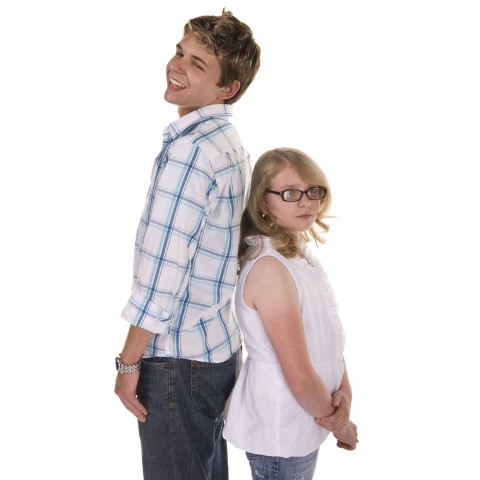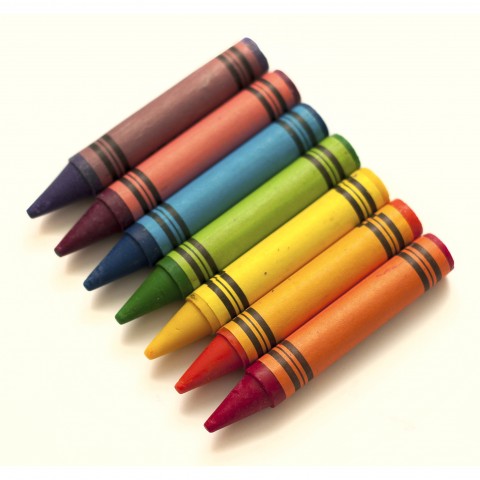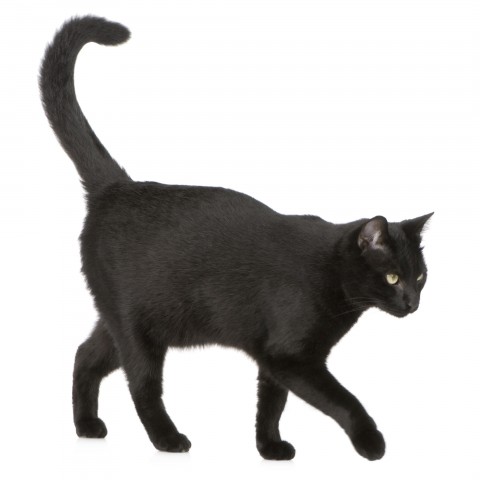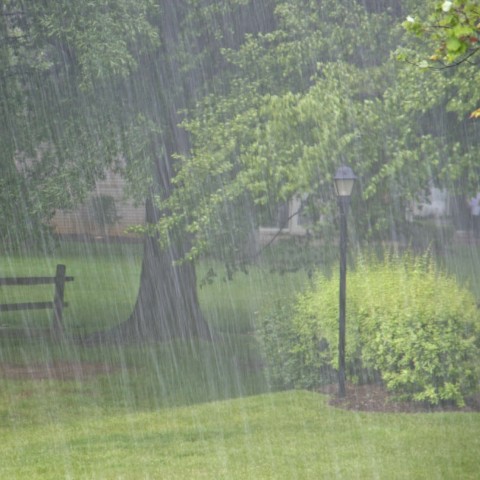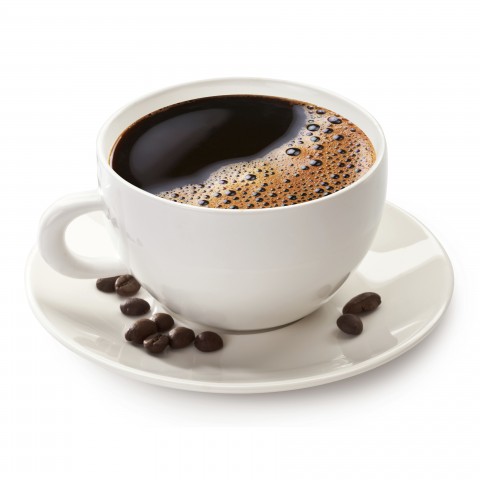Adjectives add depth and flair not only to writing, but to the world and our perception of it. You can create layers of meaning and paint a vivid picture using just the right words, making it imperative to learn these top 100+ adjectives in English. By studying the words on our list, and the provided examples of adjectives at work, you’ll be able to describe and define just about anything—that’s a lot of word power!
At EnglishClass101.com, we hope to make learning about every aspect of the English language both fun and informative, starting with this English adjectives lesson!
Table of Contents
- What is an Adjective?
- English Adjectives Usage: How Do You Use Adjectives?
- Basic English Adjectives List: 100+ Common Adjectives in English
- Conclusion: How EnglishClass101 Can Help Your English Skills Flourish!
1. What is an Adjective?
Before we begin looking at specific English adjectives and adjective examples, what is an adjective?
Adjectives are descriptive words, and allow you to define what something is like. This can be related to any aspect of the noun or pronoun you’re describing: appearance, size, smell, characteristic, and so on.
Using descriptions in speech and writing gives you the power to be specific, to embellish, and to better capture the ideas you’re trying to express. By the time you’re through with the adjective definition and examples below, you’ll be a step closer to more effective (and sometimes flowery!) communication.
2. English Adjectives Usage: How Do You Use Adjectives?
Here are some English adjective rules to keep in mind before continuing to our list!
An adjective is used to define or describe a noun or pronoun, and can appear either before or after that noun or pronoun. Take for example the following adjective examples.
Example 1:
“He lives in a large city.” (adjective + noun)
Example 2:
“The city is large.” (noun + be verb + adjective)
You can also use more than one adjective to describe a single noun or pronoun. If the adjectives are “coordinate,” meaning that they sound normal with the word “and” between them, or reversed, you can separate the two (or more) adjectives with commas.
Example 3:
“He lives in a large, noisy city.”
You can also separate the adjectives with the word “and,” in the instance that using commas would sound weird, as in the following example.
Example 4:
“The city is large and noisy.”
Finally, there are some adjectives that can line up together in a sentence without commas. These are called hierarchy adjectives, and occur when each adjective defines or describes a different aspect of the noun or pronoun.
Example 5:
“He’s a single twenty-five-year-old entrepreneur.”
In the above example, commas aren’t necessary because each adjective describes a different aspect of the man and his life. He is single (a status), twenty-five years old (an age), and an entrepreneur (an occupational role).
3. Basic English Adjectives List: 100+ Common Adjectives in English
Now that you’ve studied the adjective definition and examples, you’re ready to delve into our adjective list!
For your convenience, we’ve organized our list of English adjectives by category, each one representing different types of adjectives. This should give you a better idea of when and how to use each adjective.
We’ve also listed some of these adjectives as pairs; these are adjectives that mean the opposite of each other. We’ll give adjective examples for each word in the pair, because when learning English adjectives, opposites can help you retain the information better
Let’s get started!
1- Describing Dimensions, Sizes, & Distance
Some of the most common adjectives are used in describing dimensions, sizes, and distances. These are words that people use all day, every day, without even thinking about it, making these types of adjectives a vital asset to this list of adjectives.
Big/Small
Meaning:
“Big” – Large; taking up or covering a lot of space.
“Small” – Tiny, taking up or covering little space.
Usage:
“Big” – “They have a big yard.”
“Small” – “There was a small problem.”
Wide/Narrow
Meaning:
“Wide” – Having a large breadth measurement (measurement from one side to another side).
“Narrow” – Having a small breadth measurement.
Usage:
“Wide” – “Aunt Mercy’s hips had gotten wide.”
“Narrow” – “The path through the gate was too narrow for her.”
Tall/Short
Meaning:
“Tall” – Having a high height measurement.
“Short” – Having a low height measurement.
Usage:
“Tall” – “Jim grew tall over the summer.”
“Short” – “Kaitlin looked short next to him.”
Heavy/Light
Meaning:
“Heavy” – Having a high weight measurement.
“Light” – Having a low weight measurement.
Usage:
“Heavy” – “Parker carried the heavy package.”
“Light” – “He let Lily take the light one.”
High/Low
Meaning:
“High” – Having a large height measurement; being a long way above the ground.
“Low” – Having a small height measurement; being only a little way above the ground.
Usage:
“High” – “She didn’t know how high the airplane was going to go.”
“Low” – “Kyle was scared when the pilot flew low.”
Close/Far
Meaning:
“Close” – Nearby; not a long distance away.
“Far” – A long distance away.
Usage:
“Close” – “Nani came close to giving up.”
“Far” – “She continued, though her goal seemed far away.”
Additional Note:
There’s a phrase often used in English, using both of these words: “So close, yet so far.” This phrase indicates that something may be near (usually referring to a goal or intended outcome), but the means of getting there isn’t good enough, and so it’s still out of reach.
2- Describing General Quantity
The adjective words I outlined below are those that describe a general quantities that are not necessarily determined. These are adjectives you’ll hear quite often, as it’s easier to use a placeholder word than to count the number of nouns there are, or to name every noun involved.
Some
Usage:
“Samuel had some mangos in the back of his truck.”
Meaning:
Here, the adjective some describes the noun “mangos.” He doesn’t just have mangos; he has some mangos. This is an undefined number, but indicates more than one or two.
Any
Usage:
1. “She didn’t want to gain any attention at the party.”
2. “He was willing to go along with any of the ideas.”
Meaning:
The adjective any refers to not being exclusive to a single noun or pronoun, and can be used in both a positive and a negative sense.
The first example sentence shows any in a negative sense; she isn’t picky about who does or doesn’t give her attention, because she wants none. The sentence could be rewritten: “She wanted to gain no attention at the party.”
The second example sentence shows any in a positive sense; he isn’t picky about which idea he goes along with, because they all seem equally good.
Every
Usage:
“Every person there knew her secret.”
Meaning:
In the above sentence, the adjective every is quantifying the noun “person.” Every indicates that no one (or nothing) is excluded; it’s all-inclusive. In this instance, it means that each person there knows her secret, without exception.
Each
Usage:
“I want to grade each paper myself.”
Meaning:
The adjective each is very similar in meaning to “every.” However, each indicates a one-by-one basis, as opposed to an all-at-once basis. In the above sentence, the speaker wants to check all of the papers, one-by-one. It also indicates that the papers the speaker wants to grade are of limited number or type; if they said every instead of each, it might sound like they want to grade all the papers in the world (depending on the context, of course).
All/None
Usage:
“All” – “Ursula wanted all the glory.”
“None” – “Though his friends were eating ice cream, Lionel had none.”
Meaning:
“All” – In the example sentence, all is an adjective that quantifies the noun “glory.” All indicates “the entirety,” of something, meaning that Ursula wanted to have every last bit of glory.
“None” – None means the opposite of all. In the example sentence, the adjective none quantifies the noun “ice cream.” Lionel didn’t have ice cream.
A couple
Usage:
“I could really go for a couple glasses of wine.”
Meaning:
A couple indicates that there are two of something. In the above sentence, the speaker (in a general sense) is saying that they want two glasses of wine. (But we all know that a couple glasses can soon turn into a few…)
A few
Usage:
“Gordon left for the airport a few minutes ago.”
Meaning:
A few indicates more than one or two, and is usually limited to smaller numbers depending on the context. In the above sentence, a few is an undefined number of minutes, but indicates that it wasn’t very long ago that Gordon left.
Several
Usage:
“Janie had several friends.”
Meaning:
Several indicates more than “a few,” but less than “many.” Technically speaking, several is meant to indicate “seven,” but as with most words, this original meaning doesn’t really hold up today, and this adjective can mean anything more than “a few.”
Many
Usage:
“There were many incidents that day that upset Carla.”
Meaning:
Many indicates “a lot.” We can assume from the above sentence that Carla had a very bad day, because there were a lot of upsetting incidents.
Much
Usage:
“Bonnie would never know how much he loved her.”
Meaning:
Much, once again, indicates “a lot.” (Think of: “He loved Bonnie a lot.” ) However, it’s imperative to note that many and much can’t be used interchangeably.
Many indicates a number, while much indicates an undefined quantity, also called a “mass noun.” Using them in place of each other is incorrect, despite their similar meanings at the surface.
This is a challenge to remember even for native English-speakers, so do be mindful of this rule: Use many when referring to a number, and much when referring to a general quantity.
Little
Usage:
“Joe felt a little sorry for his friend.”
Meaning:
Little is the opposite of “much.” It indicates a small quantity, as opposed to a large quantity. In this case, Joe isn’t overly sorry for his friend, but he does feel slightly bad.
3- Describing Numbers & Order
Actual numbers can also be used to describe something, especially in terms of expressing order. Below I’ve listed the numbers one through ten, each one with its ordinal term below it; this is the term you would use to describe order, which I’ll talk about a little later.
By the way, if you want a much more comprehensive view of English numbers, I’ve written a separate article just about that! Do check it out if you need to brush up on your number vocabulary.
Numbers 1-10
- 1 (One)
- First
- 2 (Two)
- Second
- 3 (Three)
- Third
- 4 (Four)
- Fourth
- 5 (Five)
- Fifth
- 6 (Six)
- Sixth
- 7 (Seven)
- Seventh
- 8 (Eight)
- Eighth
- 9 (Nine)
- Ninth
- 10 (Ten)
- Tenth
How to Use: Order
To use numbers to describe order, simply place the ordinal term of the number place something is in.
For Example:
Noland finished the race in ___ place.
Here, you replace the blank space with the ordinal term for what place he came in.
Noland finished the race in third place.
How to Use: Defining How Many
To use numbers to define how many there are of something, put the numeral or written number in front of the noun.
For Example:
Stella ate ___ apples.
Put the number in the blank spot to indicate how many apples Stella ate.
Stella ate 3 apples.
Or
Stella ate three apples.
4- Describing Speed, Difficulty, Importance, etc.
What adjective words can you use to describe speed, the difficulty of something, or how important something is? These are fairly abstract types of adjectives, but are essential in expressing both facts and how you interpret those facts.
Things like difficulty and importance are subjective, meaning that your perception of them may be different than someone else’s perception. You may find something easy that someone else finds difficult; you may not care as much about a topic as a friend does.
Being able to adequately express these opinions and interpretations to people, as well as describe the facts surrounding them, will take your English communication to a higher realm. This list of adjectives is a good place to start, but the sky’s the limit!
Fast/Slow
Meaning:
Fast – At high speed/pace; quick.
Slow – At low speed/pace.
Usage:
Fast – “Brenda moved fast to get out of there.”
Slow – “Time was moving very slow.”
Easy/Difficult
Meaning:
Easy – Not difficult; simple; straightforward; not labor-intensive.
Difficult – Complex; labor-intensive; hard.
Usage:
Easy – “For Dan, passing the test was easy.”
Difficult – “Ned found it more difficult.”
Important/Unimportant
Meaning:
Important – Having much significance; necessary; of much value.
Unimportant – Having little significance; unnecessary; of little value.
Usage:
Important – “It was important that Jamie made it to the finals.”
Unimportant – “To do well, Jamie had to forget about the unimportant things.”
Additional Note:
In this adjective and many others, you can make it mean the opposite by adding the prefix “un” or “in.” Keep an eye out for more words on this adjectives list that include these prefixes!
Significant/Insignificant
Meaning:
Significant – Having much importance; holding much meaning; notable.
Insignificant – Having little importance; holding little meaning; not notable.
Usage:
Significant – “There was a significant drop in crime that year.”
Insignificant – “However, the change in quality of life was insignificant.”
5- Describing Value
In a lot of ways, we really do live in a value-based world. We judge objects, activities, other people, and even ourselves, based on our perceived value (or worth) of them. While there are a myriad of ways to describe or define value, I’ll just go over the most basic English adjectives of quality.
Good/Bad
Meaning:
Good – Adequate; high-quality.
Bad – Inadequate; low-quality.
Usage:
Good – “Scot did good work on the project.”
Bad – “Hopefully it’ll help him overcome his bad rap.”
Amazing/Awful
Meaning:
Amazing – Wonderful; very good.
Awful – Terrible; very bad.
Usage:
Amazing – “Watching the sunset was amazing.”
Awful – “But it was awful when the mosquitos came out.”
Invaluable/Worthless
Meaning:
Invaluable – Of the utmost value; irreplaceable; priceless.
Worthless – Of no worth; of the lowest quality.
Usage:
Invaluable – “To her, the necklace was invaluable.”
Worthless – “Sadly, when she lost it, her efforts to find it again were worthless.”
Cheap/Exquisite
Meaning:
Cheap – Low in cost; low-quality; not valuable.
Exquisite – High-quality; valuable; beautiful.
Usage:
Cheap – “The perfume she bought was just a cheap knock-off brand.”
Exquisite – “The chandelier in her living room was exquisite.”
6- Describing Situations
Some situations are far more memorable than others, for better or worse. But every second we take a breath, we find ourselves in some kind of situation. In this section, I’ll introduce you to an adjective definition and examples for describing most situations on a basic level.
Safe/Dangerous
Meaning:
Safe – Having little or no risk, leaving little chance of something bad happening.
Dangerous – Involving risk, especially of something that could harm those involved.
Usage:
Safe – “Valerie always wanted to ensure that her children stayed safe.”
Dangerous – “Tony often found himself in dangerous situations while on the police force.”
Fun/Boring
Meaning:
Fun – Involving entertainment and/or enjoyable activities.
Boring – Lacking entertainment and/or enjoyable activities.
Usage:
Fun – “Lou thinks that playing hockey is lots of fun.”
Boring – “On the other hand, he thinks that watching it is boring.”
Familiar/Unfamiliar
Meaning:
Familiar – Experienced or known about before.
Unfamiliar – Not experienced or known about before.
Usage:
Familiar – “Everything about being in her childhood home felt familiar.”
Unfamiliar – “But not having her parents around was an unfamiliar feeling.”
Awkward
Meaning:
Uncomfortable in an embarrassing kind of way.
Usage:
“It was awkward when Alex ran off to use the bathroom.”
7- Describing Colors & Patterns
When it comes to English adjectives, colors and patterns are some of the loveliest things a person can describe. Here are the English adjectives you can use to do so!
Red
Meaning:
First color in the rainbow; the color of blood.
Usage:
“He drove a red car.”
Orange
Meaning:
Second color in the rainbow.
Usage:
“He only wore orange shoes, so everyone thought he was weird.”
Yellow
Meaning:
Third color in the rainbow; color of the sun.
Usage:
“Marcel’s son always asked him why the sun was yellow.”
Green
Meaning:
Color before blue in the rainbow; the color of grass.
Usage:
“Alondra always enjoyed walking in the green grass.”
Blue
Meaning:
Color in the rainbow after green; the usual color of the sky.
Usage:
“Albert’s favorite color is blue.”
Indigo
Meaning:
The color between blue and purple; named after a dye.
Usage:
“Cora decided to purchase the indigo dress instead of the black one.”
Purple
Meaning:
Last color of the rainbow; commonly found in clothing, blankets, etc.
Usage:
“She enjoyed wearing her purple coat.”
Pink
Meaning:
The color produced when red and white are mixed.
Usage:
“The pink flowers were Eloise’s favorite.”
Gray
Meaning:
A color somewhere between black and white.
Usage:
“Maxwell often became depressed when the sky was gray and overcast.”
White
Meaning:
The lightest color on the spectrum, from which all other colors are capable of being formed.
Usage:
“Vince and his girlfriend watched the white clouds drift by.”
Black
Meaning:
The darkest color on the spectrum, which is capable of consuming all other colors.
Usage:
The black cat held its head up high.
Light/Dark
Meaning:
Light – Lacking darkness; of a lesser hue, tending toward white.
Dark – Lacking light; of a deeper hue, tending toward black.
Usage:
Light – “Susan much preferred the light color scheme of the first painting she saw.”
Dark – “The oil painting after it used many dark colors.”
Multicolored
Meaning:
Having more than one color, usually several.
Usage:
“Sharla laughed at Dan for wearing his multicolored jacket.”
Argyle
Meaning:
Argyle, despite sounding a lot like “gargoyle,” is simply an adjective that describes a diamond-like pattern. This is often found on cloth materials, especially clothing.
Usage:
“Olive begged Peter not to wear his argyle sweater to the get-together.”
Plaid
Meaning:
Plaid (also called tartan) is a pattern that involves crisscrosses of various shades of color. It’s often found on clothing in the United States.
Usage:
Anita wore plaid shirts just about every day.
Striped
Meaning:
A striped pattern indicates a design of many lines going either vertically or horizontally, typically on an article of clothing or other everyday object.
Usage:
“Liz thought that her striped dress made her look fat.”
Polka Dot
Meaning:
A polka dot pattern is one that usually involves large dots of any color on a background of a different color (or shade).
Usage:
“Liz much preferred her polka dot dress.”
8- Describing Shapes
In this section, I’ll cover how to describe the shape of things. This is a topic less likely to come up in a day-to-day conversation (unless your profession involves shapes!), but is definitely useful to know.
Round (Rounded)
Meaning:
Round – The shape of a circle.
Rounded – Having edges or an overall shape that resembles something round.
Usage:
Round – “The ball was round.”
Rounded – “The table had rounded edges.”
Square (Squared)
Meaning:
Square – Having four corners and four sides, each of equal measure.
Squared – In this case, resembling something that is square, or having been made to look square.
Usage:
Square – “The coffee table was in the shape of a square.”
Squared – “The hedges were squared by the landscaper.”
Additional Note:
The word “squared” has another meaning when used mathematically. In math, it means “doubled,” and has nothing to do with actually being square. Be sure to take note of the context when using this word, or reading/hearing it!
Rectangular
Meaning:
Having four corners of equal measure, and four sides of different lengths (with those across from each other being equal in length).
Usage:
“The dining room table was rectangular.”
Triangular
Meaning:
Resembling a triangle, which has three angles and three sides.
Usage:
“Bobby had kind of a triangular face.”
Diamond
Meaning:
A shape with four angles and four sides, similar to a rectangle but with pointed tips; usually vertical; the shape of a baseball field.
Usage:
“Her narrow face had almost a diamond shape.”
Additional Note:
When talking about a “diamond shape,” in the United States, we’re rarely talking about something that’s shaped like an actual diamond. Real diamonds vary in shape and size, whereas the diamond shape we use to describe things is limited to the above description.
Heart
Meaning:
A shape meant to indicate love, as shown in the image below.
Usage:
“Before departing, they used their hands to form a heart shape.”
9- Describing Weather
Weather is small-talk’s best friend, and it’s something you experience constantly. Here’s a list of the most basic weather adjectives to help you express what the weather is and how you feel about it! For a more in-depth look at U.S. weather vocabulary and information, check out my article on United States Weather!
Hot/Cold
Meaning:
Hot – Of a high temperature.
Cold – Of a low temperature.
Usage:
Hot – “It was hot sitting in the sunshine outside.”
Cold – “Marko still preferred it to the cold winter.”
Warm/Cool
Meaning:
Warm – Of a moderately high temperature.
Cool – Of a moderately low temperature.
Usage:
Warm – “Hector likes to take walks in the warm weather.”
Cool – “He likes it even better when there’s a cool breeze.”
Dry/Humid
Meaning:
Dry – Lacking moisture.
Humid – Having much moisture.
Usage:
Dry – “After a very dry summer, they expected rain.”
Humid – “With the downpours came more humid weather.”
Windy
Meaning:
A weather condition in which there’s a lot of wind.
Usage:
“Lana had to keep fixing her hair because it was windy outside.”
Snowy
Meaning:
When snow is falling, or there’s a lot of snow on the ground. Can also refer to somewhere that it snows a lot.
Usage:
“The children wanted to play outside during the snowy weekend.”
Rainy
Meaning:
When it rains a lot. Can also refer to somewhere that it rains a lot.
Usage:
“Elsa was tired of being inside because of the rainy weather.”
For more weather words, be sure to check out our Weather Vocabulary List!
10- Describing Taste
I’m tempted to say that food, and therefore taste, is just as universal a topic as the weather. And how often do the two things go together? When I think of the summer heat, I think of watermelon and barbeques; when I think of the winter cold, it’s soup and hot chocolate. Here are some taste-related English adjectives to describe food.
Sweet
Meaning:
Sugary or possessing a sugary flavor.
Usage:
“The chocolate and peanut butter fudge was very sweet.”
Salty
Meaning:
Containing or tasting like salt.
Usage:
“The lasagna was too salty for Elizabeth’s taste.”
Sour
Meaning:
Strong, puckering flavor; can sometimes indicate something has expired.
Usage:
“Lemons are much too sour to eat by themselves.”
Bitter
Meaning:
Often strong or bold flavor, usually in a way that’s unpleasant.
Usage:
“She can’t drink that kind of coffee because it’s too bitter.”
Mild/Spicy
Meaning:
Mild – Not having much spice.
Spicy – Hot; can cause watery eyes, swelling in throat, etc.
Usage:
Mild – “Sandra prefers foods that are more mild.”
Spicy – “But her husband loves to eat spicy foods, like habanero peppers, in his meals.”
Savory
Meaning:
Typically refers to having a refined flavor, especially being spicy or salty.
Usage:
“Gary’s favorite meal at the restaurant was the savory steak and potatoes.”
Tangy
Meaning:
Usually refers to an offbeat, sometimes citrusy, flavor; often used to describe fruity or heavily spiced foods.
Usage:
“She thought the mango salsa was a little too tangy.”
11- Describing Feeling & Sense
Below is an adjective list of the most common adjectives used to describe feeling and sense. Learning these adjective words will give you a better idea of how to express what things feel like, both physically and emotionally. Take a look at these adjective definitions to better describe the world around you in terms of feeling.
Soft/Hard
Meaning:
Soft – Easily moldable; not hard.
Hard – Solid and rigid; not easy to break.
Usage:
Soft – “The blankets were soft.”
Hard – “However, the mattress was too hard.”
Smooth/Rough
Meaning:
Smooth – Without calluses or bumps; oftentimes flat.
Rough – With calluses, bumps, or ridges.
Usage:
Smooth – “The marble countertops were smooth.”
Rough – “The tree bark was quite rough.”
Pleasant/Unpleasant
Meaning:
Pleasant – Comfortable; nice; enjoyable.
Unpleasant – Uncomfortable; unenjoyable.
Usage:
Pleasant – “The feeling of the sun on her skin was pleasant.”
Unpleasant – “The sunburn she got afterwards, however, was very unpleasant.”
Comfortable/Uncomfortable
Meaning:
Comfortable – A desirable or pleasant feeling; good for rest and relaxation.
Uncomfortable – Not desirable or pleasant, especially for rest or relaxation.
Usage:
Comfortable – “The living room design was very comfortable.”
Uncomfortable – “Stan felt uncomfortable in his office chair.”
Painless/Painful
Meaning:
Painless – Not involving pain; easy.
Painful – Involving pain; difficult.
Usage:
Painless – “The procedure was fairly painless.”
Painful – “Jen had some painful memories of her hometown.”
12- Describing Traits, Appearance & Condition
All the time, people describe objects and other people using aspects related to these types of traits. The adjective examples below aren’t exhaustive, but these are the most common English adjectives to describe a person!
1. Physical
Young/Old
Meaning:
Young – Having few years.
Old – Having many years.
Usage:
Young – “Po remembered visiting the library when he was young.”
Old – “But now, both he and the library were old.”
Strong/Weak
Meaning:
Strong – Having much strength/energy.
Weak – Having little strength/energy.
Usage:
Strong – “Franny still felt strong after running the marathon.”
Weak – “Joe’s work performance had been weak.”
Healthy/Sick
Meaning:
Healthy – In good condition; strong; not sick.
Sick – In poor condition; weak; unhealthy.
Usage:
Healthy – “After a week in the hospital, Fred was healthy again.”
Sick – “Karla stayed home from school because she was sick.”
Pretty/Ugly
Meaning:
Pretty – Attractive in appearance, especially a female.
Ugly – Unattractive in appearance.
Usage:
Pretty – “Rey never felt pretty, so she wore a lot of makeup.”
Ugly – “Lisa always thought that the cat next door was ugly.”
Slim/Fat
Meaning:
Slim – Small, especially in terms of body mass.
Fat – Large, especially in terms of body mass.
Usage:
Slim – “Sara was very slim.”
Fat – “But her father, Mr. Farrow, was a fat man.”
2. Other
Employed/Unemployed
Meaning:
Employed – Having work/a job.
Unemployed – Not having work/a job.
Usage:
Employed – “Natalie felt lucky that she was still employed after the big layoff.”
Unemployed – “She knew plenty of other newly-unemployed people from her work.”
Educated/Uneducated
Meaning:
Educated – Having education, especially college/university education. Can also refer to simply being intelligent or knowledgeable on something.
Uneducated – Not having much education.
Usage:
Educated – “Rebecca came from a very educated family, but never went to college.”
Uneducated – “That didn’t make her completely uneducated; she knew a lot about programming.”
Single/Married
Meaning:
Single – Not in a relationship with someone; unmarried; alone.
Married – Joined in marriage with someone.
Usage:
Single – Ned was the only single person in the group.
Married – Even Perry was now married.
13- Describing Personality, Behavior & Feelings
Now that we’ve gone over the conditions and outer traits that are common in people, let’s take a deeper look. Here are some common adjectives used to describe who (or how) a person is: English adjectives of personality, emotions and behavior.
Personality:
- Kind
- Being nice and considerate toward others, usually in a selfless way.
- “Missy is very kind; she helps those in need.”
- Open-minded
- Willing to look at things from multiple sides; ability to put oneself in another’s shoes.
- “Kelly tries to be open-minded and see things from other perspectives.”
- Funny
- Having a good sense of humor, and able to make others laugh.
- “Why is Kevin so funny?”
- Friendly
- Having an open and kind personality; welcoming toward others; encouraging friendship.
- “Marge always tries to be friendly with the newcomers.”
Feelings:
- Happy
- Having positive feelings; joyful; seeing things in a positive way.
- “Everyone who knew John talked about how happy he was.”
- Relaxed
- Feeling rested and calm; not exerting much energy.
- “Marcia finally felt relaxed after a long day at work.”
- Excited
- Having strong (usually positive) feelings about something; greatly looking forward to that thing.
- “Rita’s children were excited to go to the beach.”
- Hopeful
- Having good feelings about what’s to come; expecting good things even in bad circumstances.
- “Bert was always hopeful about the future.”
2. Negative
Personality:
- Mean
- Not nice; willing to hurt others.
- “Silvia was mean when she decided to blame her sister for the accident.”
- Rude
- Not well-mannered; usually outspoken; careless about others’ feelings.
- “Kit was rude by spitting out her food at the dinner party.”
- Selfish
- Only concerned with oneself; caring only about oneself.
- “Danny was known all over town for being selfish.”
- Narrow-minded
- Fixed in one’s ways; not willing to look at other sides or opinions.
- “Nick was often narrow-minded about people.”
Feelings:
- Sad
- Feeling negatively, often in a depressed our mournful way; associated with crying.
- “Boyd was sad when his dog died.”
- Angry
- Strong negative feelings, usually indicating resentment or frustration.
- “Allisa didn’t know why she felt angry about the event.”
- Frightened
- Scared; afraid; not feeling safe; alarmed.
- “Her daughter was frightened when she saw the spider.”
- Lonely
- Feeling alone; negative feelings of emptiness.
- “Xavier became lonely after his breakup.”
4. Conclusion: How EnglishClass101 Can Help Your English Skills Flourish!
We hope you enjoyed learning about common adjectives (and adjective definitions) with us! The adjective words we went over on our adjective list barely scratch the surface of description and definition in English, though. To include every adjective would be a bit superfluous…
Do you feel more confident answering the question, “What is an adjective?” Which of these adjectives do you see yourself using often? Write us a paragraph or two using some of these adjectives to practice your word skills: A paragraph about yourself, your country or hometown, or even a poem. It’s your choice. 😉
At EnglishClass101.com, we aim to make sure that you enjoy every second of your English-learning journey, while learning valuable information and skills. We provide practical learning tools for every student, from insightful blog posts like this one to free English vocabulary lists, and even an online forum to discuss lessons with other English learners. If a one-on-one and more tailored approach is your style, you can also upgrade to a Premium Plus account to take advantage of our MyTeacher program!
Whatever your reasons for studying English, know that with enough determination and effort, you can master the language and better understand U.S. culture. EnglishClass101 will be here with you for every step of your learning journey!







